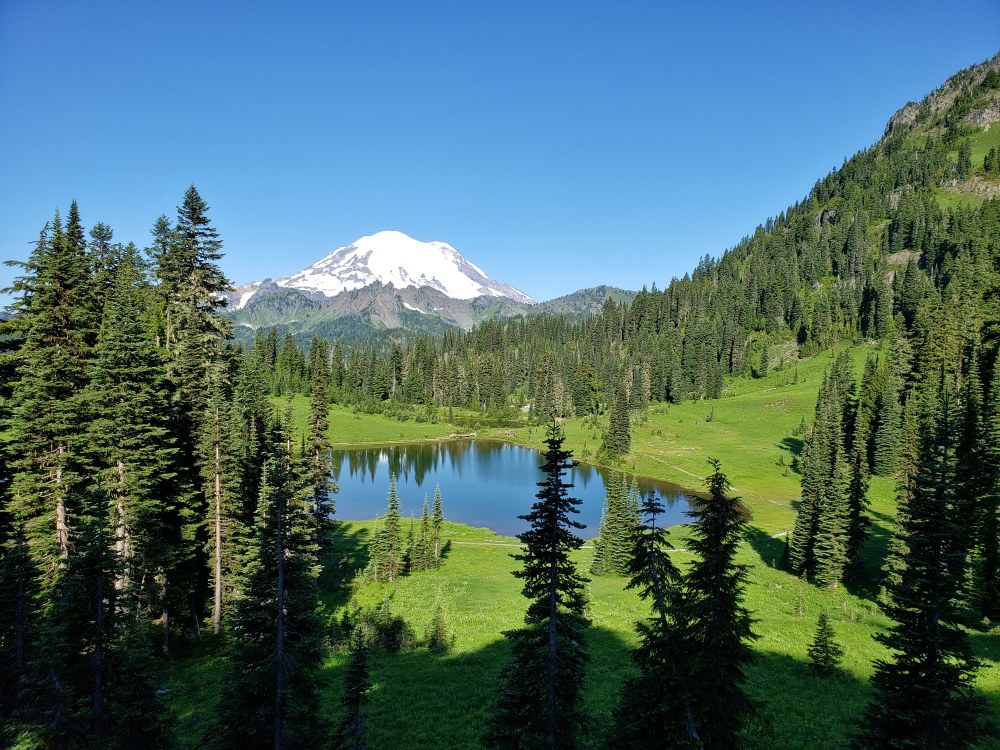
I live with two realities that are mostly hereditary: aging-related hypertension and type II diabetes. My paternal grandfather died from diabetes complications in 1958 (he was 6'4" and thin as a rail). My dad has diabetes (he's 5'3" and only 107 lbs.). So, while I'm fatter than I'd like, my weight was not the determining factor in my diabetes.
I also live with the reality that I spent a decade relatively inactive. It took the VA that long to approve surgery to replace my knees, and in the meantime I had to get control of my diabetes (check), be over age 55 (check), and lose weight (I lost 50 lbs. and still have a long ways to go). While I was waiting, pain kept me from hiking, and the arthritis eventually got to the point where just standing was excruciating. I lost a lot of muscle tone during this time (I have most of it back now).
Two years ago, when I finally got my knees replaced, I was excited to be able to hike again. I used to hike all the time, from childhood into my late 30s, and only stopped because I moved to Seattle, didn't want to hike alone, and didn't know about The Mountaineers.
My first real hike, a couple of months after my second knee replacement, was Rattlesnake Ledge. I think I tried to do too much too soon, because I only made it about 3/4 of the way to the top. It wasn't that the length of the trip was too much for me, but trying to hike a 1,469 elevation gain over roughly 2.5 miles proved my undoing.
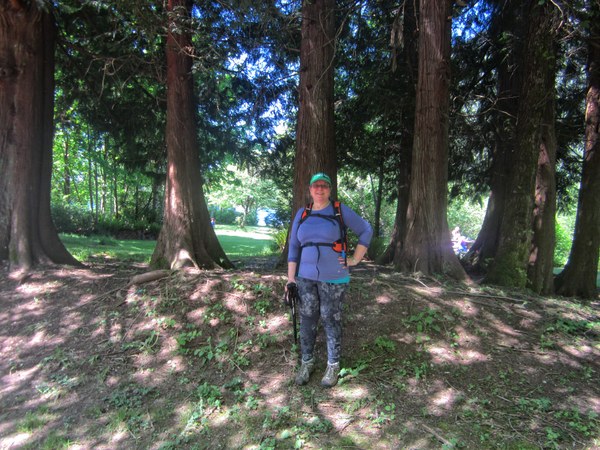 Me, after hiking part of Rattlesnake Ledge
Me, after hiking part of Rattlesnake Ledge
I didn't give up and did some easier hikes for the following month, then hiked to Berkeley Park at Mount Rainier when I felt ready. Berkeley has an elevation gain of around 1,683 feet with the majority of it coming back out of the valley and over about a mile (and during the high heat of the afternoon). My knees felt great, but towards the end of the hike, even though I was drinking plenty of water (over 2 liters), my head was pounding, my was skin dry and hot to the touch (I wasn't sweating), my stomach felt upset, and I was extremely fatigued. I was having some difficulty breathing and I couldn't stand the thought of putting anything in my mouth to eat and get more energy.
When I got to my car, I downed a bottle of chilled Gatorade as I cooled off with the AC blasting. But when I went to drink some water, I wretched. It wasn't until I got home and looked up my symptoms that I realized I had had symptoms of heat stroke, quite possibly combined with Acute Mountain Sickness (AMS), even though the highest elevation was only around 6,799' (more on this later).
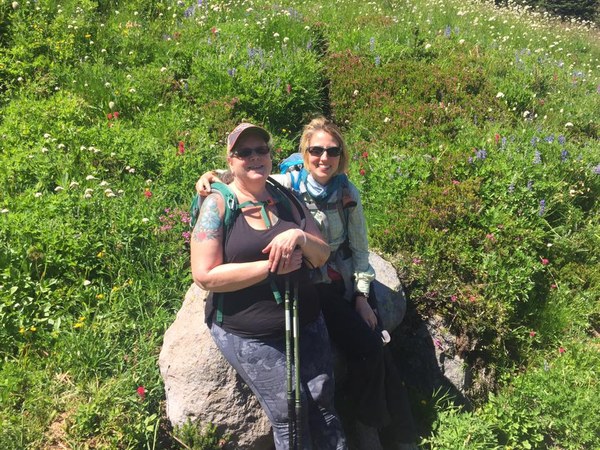 Me and Suzanne Gerber on the Berkeley Park Trail (she was my cheerleader).
Me and Suzanne Gerber on the Berkeley Park Trail (she was my cheerleader).
I'm not one to give up, so I continued to push myself on other hikes. Naches Peak Loop seemed like a trail I could do; the elevation gain was only 636 feet. But again, I started feeling sick in my stomach, I couldn't stand anything in my mouth for energy (it all tasted like sawdust), my head was pounding, and I was having trouble breathing. Another Mountaineers member gave me a Shot Blok, and that helped a bit.
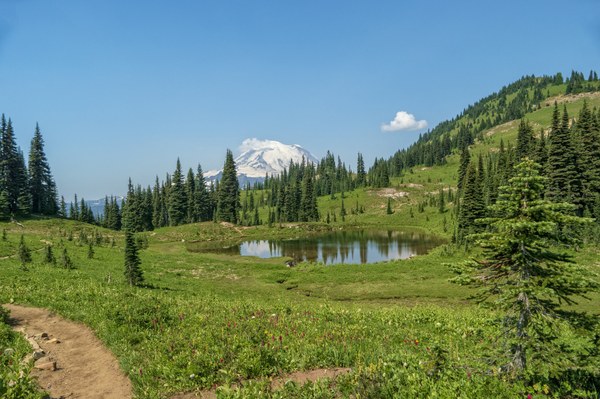 My favorite trail - Naches Peak Loop
My favorite trail - Naches Peak Loop
On a subsequent hike to the Mount Fremont Lookout (on a chilly, foggy day), I was feeling fine until I got to Sourdough Ridge. There, I suddenly doubled over and started hurling (mostly dry heaving after a few seconds). I got as far as the turn past Frozen Lake and had to turn back.
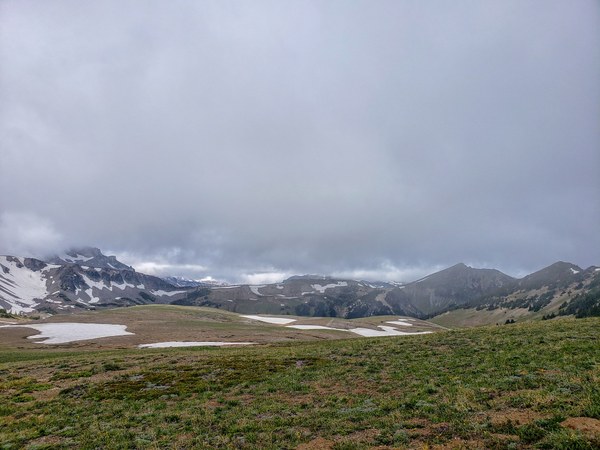 This is as far as I made it heading to the Mount Fremont Lookout.
This is as far as I made it heading to the Mount Fremont Lookout.
What I was suspecting - that I got AMS any time I hiked above 6,000ft - was starting to seem like it was really true. So, I scheduled an appointment with a pulmonary doctor at the VA (where I get my medical care). Here's what I learned:
- Since I usually reside at sea level and have a history of high blood pressure (BP), it's not uncommon to experience temporarily high blood pressure at the higher altitudes. This occurs even if you're on BP medications. High blood pressure in the lungs can occur from many causes.
- Since high blood pressure in the pulmonary vessels is a main mechanism that leads to high altitude pulmonary edema (HAPE), persons with pulmonary hypertension have a much higher risk of developing HAPE and need to consider this risk before coming to altitude. The risk should be discussed with the physician. One approach is to use supplemental oxygen during the altitude stay, which will alleviate concern for any problems.
- Bloodwork showed that I was a tad anemic (a common symptom caused by my diabetes medication, Metformin). Since I have lower red blood cell levels, it affects my acclimatization.
- Diabetes may have an effect at higher altitudes, but since I have good glucose control and my diabetes has been near goal for two years, the doctor didn't think it was an issue (only diabetics experienced with exercise and good control should attempt vigorous exercise at high altitudes).
The doctor said he had two medications I could try, neither one which seemed ideal. One might lower my blood pressure too much, which be harder to deal with if I'm hiking in an area not easily accessible to medical care. The other (dexamethasone, a steroid) might raise my blood sugar level. I went with the steroid, figuring that I could inject a bit more insulin the morning of the hike, plus exercise helps lower blood sugar.
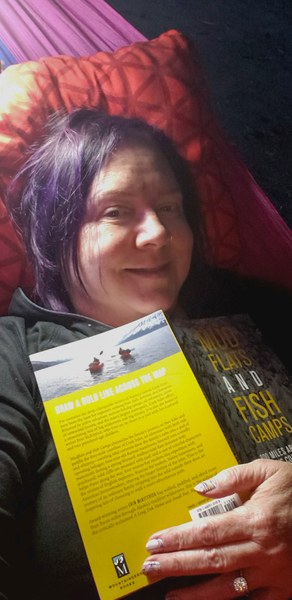 Chilling in my hammock after a hike.
Chilling in my hammock after a hike.
Since getting the medication, I haven't had a chance to try it out (other than trying it while at home to be sure it didn't affect me adversely). I thought I would need it while at Yellowstone National Park, with an average altitude of 8,000', especially since my last visit there in 2012 had me feeling miserable. But this time the altitude didn't bother me. I think it was because over the course of three nights, I was camping at increasingly higher elevations before getting to the park. The only time I had trouble breathing and was near the top of Mount Washburn (elevation 10,223'). I didn't take the medicine, but I used my Big Ox O2 to boost my oxygen levels rapidly (it helped).
I'm going to try Rattlesnake Ledge again the end of this month. It may be slow going, but I'm okay with taking more breaks and enjoying my surroundings - I don't have to break any records. And, I'm going to attempt to hike the Mount Fremont Lookout again this September. I'm determined to do it! Since I won't be spending the night acclimating to the higher altitude, I will be taking the steroid medication and taking along my Big Ox O2.
If the medication doesn't help, I may need to come to terms with the fact that higher altitudes are out for me and live vicariously through other Mountaineers (and the photos they post to Facebook). Thankfully, our state has a lot of trails at lower altitudes, so I can still get outdoors.
If you, like me, have a health condition that you think will limit your ability to hike, I want to encourage you not to give up! Do some research, talk to your doctor, go on the hikes you're physically able to enjoy comfortably, and don't let others make you feel like a failure because you can't keep up! Choose to go with people who will be supportive of your condition, and never apologize for being slow (if you want, reframe it as a thank you to them for waiting).
As a Mountaineers volunteer, I lead slower paced hikes (usually at lower altitudes with a pace of 1 to 1.5 mph). From the couple I have already led (that aren't photo hikes, but actual Hiking Committee hikes), there seems to be others wanting to get out there but are discouraged by the typical hikes listed. I hope you'll sign up via the links below to join me on these trails.
Upcoming (Slow) Hikes I'm Leading:
Add a comment
Log in to add comments.Inspirational story, Anita. Thanks for encouraging many who deal with challenges on hikes. Those challenges come in a huge variety of types.
Update: I tried to hike to the Mount Fremont Lookout today. I got about a 1/4 mile past last year's vomit spot before I started hurling (again). Plus, I was having trouble breathing. I took the steroid prescribed to me, but I guess it hadn't kicked in (I took it two hours before the hike). I ended up waiting at Frozen Lake for my hike friends continued to the lookout and back. While waiting, I started feeling better and was able to hike First Burroughs Mountain, so I'm thinking the meds finally kicked in. It's so frustrating wanting to hike to these magnificent places and the body refuses to cooperate!
Keep it up Anita! You'll get there, and we so appreciate you bringing us along for the journey.
 Anita Elder
Anita Elder